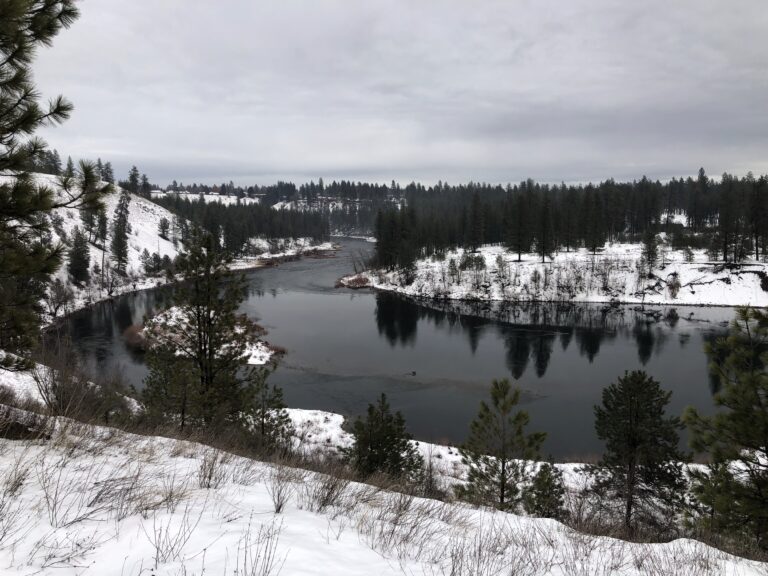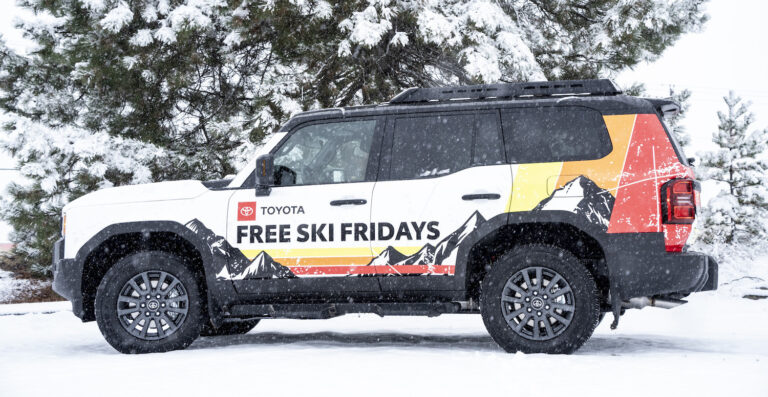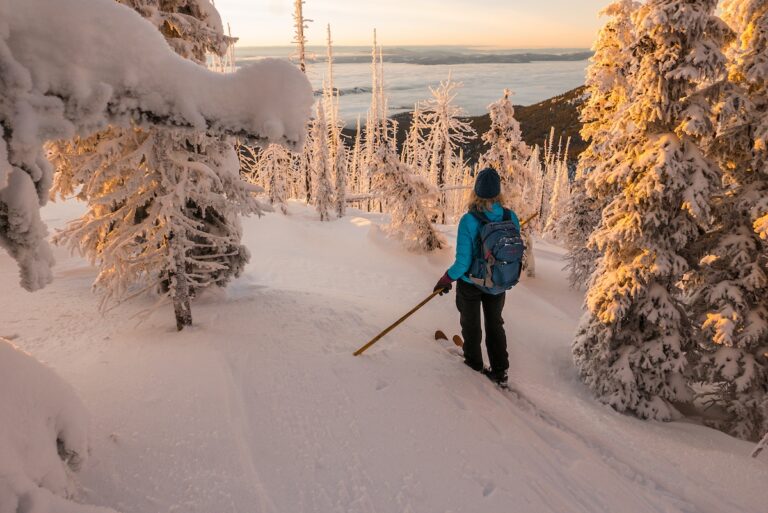GET YOUR MOUNTAIN CULTURE FIX IN ROSSLAND, B.C.
Just north of the border, about three hours from Spokane, Rossland, B.C. is a laid back mountain town with an amazing stream of cultural events and offerings. Sure, many who visit Rossland tend to come for the renowned mountain biking trails or the legendary powder dumps up on Red Mountain, but the town, the people, the history, and events like the Rossland Mountain Film Festival or this year’s 113th annual Rossland Winter Carnival are more than worth the weekend drive on their own. Take your pick from this mountain culture double-header this winter and head north:
Rossland Winter Carnival, January 22-24: Experiencing it all at Canada’s oldest winter carnival would be a serious challenge, but here are a few highlights of what you might expect over three days in January: a skier torchlight parade down Red Mountain, art events, a crazy bobsled race through downtown, a mountain music festival (Blizzard Mountain Music Festival), learn to luge lessons, snow sculpting, and of course, skiing! For more information call 1-250-362-5666 or check them out online (2010 details will hopefully be up soon): http://www.rosslandwintercarnival.com/
Rossland Mountain Film festival, November 19-22: Kicking things off with a fancy film fest Gala Thursday night, the festival continues all weekend with early (5-7 PM) all ages shows followed by late night showings and live music and revelry. The films range from mountain culture, outdoor sports, and environmental topics submitted by local film makers with a focus on the Kootenay region. There’s also a “U-19,” or under 19 festival component, with awards going to the best youth films and animations with themes of encouraging recycling and sustainable living—those films will be shown on Saturday at noon. Other film festival workshops and events are touted on the festival’s web site; however, details were scarce as of our print time. Tickets are available online or in Rossland at The Cellar and Ross Vegas Board Shop.
WHITEFISH, MONTANA AND BIG MOUNTAIN BY NIGHT TRAIN
I CAN’T IMAGINE A much more potentially romantic, certainly nostalgic, Northwest-style weekend ski getaway than this: 1. Have your bags packed and ready before heading out to downtown Spokane for whatever dinner and drinks you can squeeze in before closing time some Friday night when the powder has missed the Spokane area and is pummeling Northwest Montana; 2. Walk or catch a ride to the train station with your pre-purchased ticket and skis and other gear before the scheduled departure time at around 1 AM; 3. Kick back and snooze your way along the historic Empire Builder railroad route until your arrival at the historic station in Whitefish, Montana near Glacier National Park just in time for breakfast; 4. Stumble off the train to find your lodging of choice and dump off your belongings before catching the free snow bus that makes frequent shuttles up to Big Mountain, also known as Whitefish Mountain Resort. 5. Ski the 2,300 of vertical and over 3,000 acres of terrain or check out on-mountain Nordic and backcountry offerings; and 6. Repeat until exhausted and return to Spokane via same train (which departs Whitefish around 9PM daily this time).
There you have it, possibly the perfect ski weekend with a few nights on the town thrown in for good measure. Now here are some sites to help you get it all planned out:
www.skiwhitefish.com
www.whitefishchamber.com
http://tickets.amtrak.com
train schedule: 1-800-872-7245
SNOWSHOE TO THE SUMMIT OF MOUNT SPOKANE AND THE VISTA HOUSE
HIKING UP TO THE summit of 5889-foot Mount Spokane is an awesome local ski or snowshoe climb with the potential for outstanding views and solitude. The route up on the edge of the ski area boundary near the snowmobile parking area makes for the shortest hike to the summit and the historic Vista House, a beautiful stone structure that was built by the CCC in 1934, where you can now warm up by the fireplace, eat your lunch, and buy a cup of hot chocolate on most weekends. Technically since the mountain is mostly public land within a State Park and the ultra-simplistic art of snowshoeing doesn’t require trails, grooming, or lifts, you can start just about anywhere on the mountain and start stomping your way up to the summit. There are, however, a few preferred trailheads (that require a Snowpark pass) where you’ll find plowed parking and frequently a path already forged through the woods.
For more details on trails, trailheads, and parking, visit:
COLD SMOKE POWDER FESTIVAL, NELSON,
THERE ARE TWO REALLY good reasons to plan a trip up for Cold Smoke in Nelson and Whitewater Resort this March—the truly amazing ski clinics (tele, alpine, and backcountry), and the party and events that make Cold Smoke a festival. If you’re the kind of skier that is either ego-averse, too shy, or too broke to take any kind of clinic, then come up for the party, films, music, demos, killer food, and great skiing at Whitewater!
This is already year number 4 for the ever-evolving and improving festival. A long list of clinics for all ability levels of tele, AT, and split board riders anchors the long weekend in the Kootenays, which typically attracts world-class instructors and skiers like Greg Hill and ski superstars like Naheed Henderson, Nils Larsen, Eric Pehota, and others. Not into clinics? Then check out or enter the Randonnee Rally, a ski mountaineering race with 2,000-5,000 feet of climbing the peaks around Whitewater. And whether you attend any of the clinics or just spend the weekend skiing as you please, don’t miss the Friday night opener with adventure films, slideshows, giveaways, and local beer or the Saturday night party, which last year outdid itself with some of the best and most plentiful food I’ve ever encountered, more great local beer, and more great slideshows and entertainment! Both events typically fill up and sell out, so plan ahead.
Nelson and Whitewater Resort are about 3.5 hours north of Spokane (about 160 miles). Details at:
EXPERIENCE THE 2010 WINTER OLYMPICS METHOW VALLEY STYLE, FEBRUARY 12-28TH
MILLIONS WILL SIT AND watch the 2010 Olympic games on TV this winter instead of making the drive up to Vancouver, British Columbia for the games themselves. There is another more active option to mere sitting and watching, however. The folks tucked up against the wilds of the North Cascades in the Methow Valley (Winthrop, Twisp, and Mazama) have organized a two-week hurrah of Winter Olympics experiences they’re calling the Methow Olympic Festival, which runs February 12-28th. The festival includes events and activities, including more social settings than your living room for watching the Olympics, that will appeal to entire families, kids, dogs, and all. A dizzyingly diverse schedule of Olympic themed events and winter recreation experiences range from an opening ceremony torchlight parade, watching the Olympics at the Winthrop Ice Rink, Nordic skiing and races, snowshoe softball, snowshoe and Nordic ski tours of area trails, ice skating, a doggy-dash race, a Valentines Day illuminated night ski, and much more than I have space to describe here. The Methow Valley’s Nordic skiing, snowshoeing, sight-seeing, and mountain town amenities are world-class by themselves, so plan ahead for lodging and events you don’t want to miss given the added draw of this year’s Olympic Festival.
Full event details at:
www.mvsta.com/winter
Lodging details at:
www.methowlodging.com/lodging.php
SNOWSHOE WITH EAGLES ON LAKE COEUR D’ ALENE
EACH WINTER, BALD EAGLES, our national symbol and an Endangered Species Act success story, flock to the east end of Lake Coeur d’ Alene to feast on kokanee salmon. And where there are rare or beautiful birds, there are often bird watchers. Typically from about late December through early February, when the eagle presence peaks, people with binoculars stuck to their faces begin appearing along the side of the road in greater numbers, especially along the lakeside drive south and west from the Wolf Lodge Bay exit towards the Mineral Ridge recreation area. This beautiful chunk of public land can offer up some excellent snowshoe hiking right across the street from salmon feasting eagles, that is if the snow and eagles cooperate.
Details about the Mineral Ridge National Recreation Trail at:
www.americantrails.org/nationalrecreationtrails/blm/mineralridge-id.html
Info on eagle watching at:
www.blm.gov/id/st/en/fo/coeur_d_alene/special_areas/mineral_ridge-_wolf_lodge_bay/eagle_watch.html
SKI THE EAGLE CAP WILDERNESS AND SLEEP IN A YURT
WORLD-CLASS BACKCOUNTRY SKI touring probably isn’t the first thing that comes to your mind when you think of Eastern Oregon, unless you’re familiar with the Wallowa Mountains and know the steep, remote terrain of the Eagle Cap Wilderness. The folks at Wallowa Alpine Huts refer to the area as Oregon’s “Little Switzerland” and boast near 10,000 foot peaks; a dry intercontinental snowpack in excess of 400 inches; and diverse terrain from wide open bowls, old growth glades, north-facing powder stashes, and less technical intermediate slopes. Back at camp, you can expect large, warm yurts; tasty grub; and even a sauna. Hosted trips are led by experienced guides out of either McCully Basin (a 4-mile ski tour approach) near Enterprise, OR or Norway camp (2.5 mile ski after a snowmobile pull) near Halfway, OR on the south side of the Wallowas. Trips include catered meals, sleeping gear, and the inside scoop on the best skiing.
Reservations are recommended ASAP, as most dates fill up before Thanksgiving. The 4-day weekender trips (Thursday-Sunday) are $625 per person, and the 5-day mid-week rate (Sunday-Thursday) runs $725 per person. For the more experienced, a discounted DYI rate that requires a first-day guide and leaves you cooking your own meals and running your own show the rest of the trip is also available.
www.wallowahuts.com
541-426-4887
[email protected]
BECOME AVALANCHE AWARE—TAKE A WINTER BACKCOUNTRY SAFETY COURSE THAT COULD SAVE YOUR LIFE
ONE OF THE BEST ways to ensure you’ll be out there enjoying winter adventures for years to come is to simply stay alive! Avalanche deaths continue to rise as more and more people head out into the backcountry, many of whom are unaware of the risks and/or don’t have the right gear or training. Even with a few avy awareness courses under your belt and an avalanche beacon, shovel, probe and partner, there are serious risks associated with traveling on or near backcountry slopes on skis, snowshoes, or snowmobile. Fortunately there are typically a number of avalanche awareness courses offered throughout the region that will get you thinking about snow safety or help you build on your existing knowledge and skills. To find a course that fits your experience level, check out these organizations for starters:
Spokane Mountaineers:
www.spokanemountaineers.org
Canadian Avalanche Centre:
www.avalanche.ca/cac_training_program
CUT YOUR OWN CHRISTMAS TREE
HIKING OUT INTO THE woods to pick out and chop down your very own Christmas tree might not fit the definition of adventure to some, but it’s a heck of a lot more adventurous, and fun, than a tree shopping trip to the Walmart parking lot. A real tree will look and smell better in your living room, and there’s more pride and connection in actually putting some work and effort into finding and hauling home your own local tree. It’s also a good excuse to drag the family out in the cold on a hike! If you or a loved one happen to be concerned about contributing to the millions of trees that are killed in the name of Christmas cheer each year, you can always start a new family tradition and return in the spring to plant a few new trees to replace it.
Before you get all Paul Bunyan and run out into the nearest stand of timber with your flannel shirt and axe, you’ll need to jump through a couple hoops to keep it legal. The Inland Northwest has a plentiful supply of various types of small pine, fir, and spruce trees due to all the logging that’s taken place on public lands over the years and there are also a lot of local tree farms that specifically grow Christmas trees; however, private landowners and our public lands managers don’t appreciate tree cutting without permission. You’ll need a permit and/or to pay for your tree. All that’s left is to bundle up the whole family, grab the right saw and some rope to tie the thing on the roof of your rig, and hike around until you find that perfect tree.
Here’s a list of a couple nearby legal tree-cutting areas:
Colville National Forest (includes tree-cutting tips):
www.fs.fed.us/r6/colville/passespermits/christmas-tree.shtml
Idaho Panhandle National Forest:
www.fs.fed.us/ipnf/visit/brochures/xmas/index.html
National Christmas Tree Association (list of local tree farms):
www.christmastree.org/s_location.cfm?x_type=state&x_state=WA
SPEND THE NIGHT IN A SNOW CAVE
I HAVE SPENT A total of about 5 minutes in snow caves in my life thanks to a healthy aversion to claustrophobic spaces. I’ll take a tent any day, thanks. But there is something cool about knowing how to dig your own hole in the snow to get out of the wind and weather if need be. With enough time, attention to detail (like building a cave away from avalanche terrain) and the right clothing and tools, you can make a cave big enough for a couple people to sleep in. Some crafty folks even create spaces to hang out and cook and platforms for sleeping. Your body heat will make the snow cave, with all its insulation, balmy compared to your average winter temps outside. Of course to make your night out at least somewhat enjoyable, you’ll need a thick layer of closed foam and/or inflatable mattresses and a winter rated sleeping bag—I’d want at least a 0 degree rated synthetic bag or a same rated down bag plus a bivy sack but maybe something warmer depending on the conditions and distance from the car. Just about anybody can freeze their ass off in a hole in the snow for a night, but it takes some planning and a bit of knowledge on the subject to dig a relatively safe, comfortable snow cave. People, have died in snow caves, typically because they didn’t know what they were doing or ignored basic safety precautions. Do some reading, make some practice caves, follow all safety tips, and consider digging your first overnighter cave with someone who really knows what they’re doing first. Here are a few online resources to get you started, and there are also good videos on YouTube:
www.traditionalmountaineering.org/faq_snowcaves.htm
www.outdoorswithdave.com/camping/building_a_snow_cave.htm













